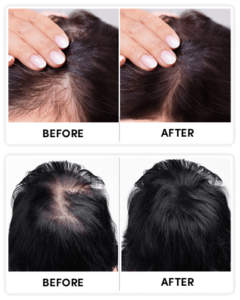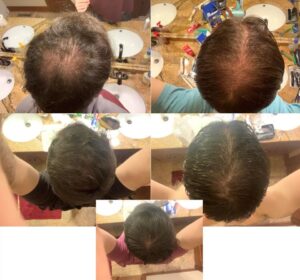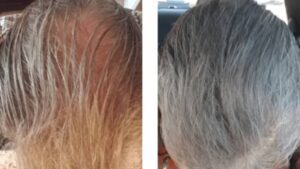Hair Transplants: A Step-by-Step Journey from Consultation to Recovery

Getting to Know Hair Transplants
Losing hair can really hit you hard, affecting not just how you look but also how you feel about yourself. Thankfully, hair transplants are here to save the day, offering a natural way to bring back that full head of hair. Whether you're noticing thinning spots or dealing with bald areas, getting the scoop on hair transplants is the first step toward making a smart choice. In this guide, we're going to take you on a journey through the entire process, from your first meeting with a specialist to bouncing back after the procedure.
What Are Hair Transplants All About?
Hair transplants are all about relocating hair follicles from a donor area—usually the back or sides of your head—to spots that need a little help. There are two main ways to do this: Follicular Unit Transplantation (FUT) and Follicular Unit Extraction (FUE). Each method has its own perks, and the best choice often hinges on your specific needs and your surgeon’s expertise.
Why Consider Hair Transplants?
The best thing about hair transplants? They give you that natural look you’re after. The results stick around for the long haul, letting you enjoy your new appearance for years. Plus, getting a hair transplant can really give your self-esteem a boost, making you feel more at ease in social and work situations. And since it’s your own hair being used, there’s no worry about rejection or mismatched colors.
Busting Hair Transplant Myths
Even though hair transplants are becoming more popular, there are still some myths floating around. Some folks think the results look fake, but thanks to tech advances, that's not the case anymore. Another misconception is that hair transplants are just for men; women can totally benefit too. And if you’re worried about the cost, many clinics now offer flexible payment plans.
Your First Hair Transplant Consultation
Picking the Right Specialist
Choosing the right specialist is a big deal. Look for someone who’s board-certified with a solid track record in hair restoration. Check out reviews and ask to see before-and-after photos of their work. A good specialist will put your needs first and make sure you’re clued in on what the process involves.
What Happens During Your Consultation?
When you meet with the specialist, they’ll assess your hair loss and talk through your options. This is your chance to ask questions and air any concerns. They’ll also check out your medical history to make sure you’re up for the procedure. You’ll walk away with a better idea of what to expect, which should help put your mind at ease.
Watch Your Hair Come Back FASTER Than You EVER Dreamed Possible

WITHOUT Expensive Medications, Lasers, or Painful Surgeries!
Try this at homeSharing Your Goals and Hopes
Be upfront about what you’re hoping for during your consultation. Setting realistic goals is key to avoiding letdowns. Your specialist will help you understand what’s possible and work with you to craft a personalized plan. So speak up about what you want!
Getting Ready for Your Hair Transplant
Pre-Procedure Tips
Getting ready for your hair transplant is crucial. Your specialist will give you some guidelines, like steering clear of blood thinners and certain supplements. You might also need to quit smoking and cut back on alcohol, as these can mess with the healing process. Following these instructions is important.
Hair Transplant Techniques Explained
Learn about the techniques your surgeon might use. With FUT, they’ll remove a strip of your scalp, while FUE involves taking out individual follicles. Each method has its ups and downs, and your surgeon will suggest the best one based on your hair type and how much hair you’ve lost.
Planning the Big Day
Plan your procedure date carefully and make sure you have time to recover. It’s a good idea to have some support lined up, as you might need a hand in the beginning. Coordinate with your schedule to make sure it doesn’t clash with work or personal commitments.
On the Day of Your Hair Transplant
Arriving at the Clinic
When the day of your procedure rolls around, show up at the clinic calm and ready. Wear comfy clothes and skip the hair products. The staff will guide you through each step, making sure you’re comfortable the whole way through.
How the Hair Transplant Works
The procedure kicks off with numbing the donor and recipient areas. For FUE, they’ll extract and implant individual follicles. With FUT, they’ll take a strip of your scalp and break it down into grafts. Depending on how much work needs to be done, the whole process can take several hours.
Why The Ancient Samurai Warriors Never Lost Their Hair…

guaranteed to work for any men or women out there...
Watch free special videoAftercare Instructions
Once it’s all done, your surgeon will hand over some aftercare instructions. Stick to these closely to help with healing and avoid any hiccups. They might include tips on cleaning the treated area, meds to take, and activities to skip. Following these guidelines is essential for a smooth recovery.
Recovering Right After the Procedure
Dealing with Discomfort and Swelling
Feeling some discomfort and swelling post-procedure is totally normal. Over-the-counter pain meds and cold compresses can help. Your surgeon might also give you something to keep swelling down and make you more comfortable.
The First 24 Hours Post-Transplant
The first day after your transplant is super important. Take it easy and avoid anything too strenuous. Keep your head elevated to help with swelling and follow your surgeon’s instructions to a T. This early period is crucial for setting up a successful recovery.
Tips for Taking Care of Your Hair
Be gentle with your hair in the early days. Don’t wash it unless you’re told to, and steer clear of styling products. Taking care with the new grafts will support the healing process and keep everything on track.
Looking at the Long-Term Recovery
Getting to Know the Hair Growth Cycle
Patience is key during recovery. Hair grows in cycles, so new growth might take a few months to show up. The transplanted hair may shed at first, but that’s all part of the process. Trust the timeline and make sure to keep up with regular check-ins with your specialist.
When Will You See Results?
You’ll typically start seeing results around three to four months after the transplant, with full results showing up within a year. Everyone’s journey is different, so it’s important to manage your expectations and celebrate each step forward.
Top Trichologist: Do This To Your Scalp To Regrow A Full Head Of Hair

Completely natural and dirt cheap way that makes it possible for you to finally regrow all your hair back.
Try this at homeKeeping Up with Follow-Up Appointments
Regular follow-ups are crucial to track your progress and address any issues. Your specialist will give you tailored advice to get the best results. Sticking to these appointments ensures you’re on the right path to a successful outcome.
Understanding the Risks and Complications
Possible Side Effects
Like any surgery, hair transplants come with some risks. Common side effects include swelling, redness, and itching, but these are usually mild and clear up with care. Knowing what to expect helps you manage your recovery better and catch any problems early.
When to Reach Out for Help
If you’re dealing with severe pain, signs of infection, or unusual swelling, get in touch with your specialist right away. Acting quickly can help prevent complications and ensure a smooth recovery. Trust your gut and don’t hesitate to seek advice if something doesn’t feel right.
Making Sure Your Recovery Goes Smoothly
Following your aftercare instructions and keeping up with follow-ups are key to success. Stay connected with your specialist and take their advice to heart. This proactive approach supports a positive outcome and a confident new look.
Wrapping It Up: Loving Your New Look
Keeping Your Hair Healthy
After your transplant, it’s important to maintain a healthy hair care routine. Use gentle products, avoid too much heat styling, and feed your scalp with a balanced diet. These habits will keep your new hair looking great and promote overall health.
Embracing Your New Confidence
With your fresh look, embrace the newfound confidence it brings. Dive into activities that boost your self-esteem and celebrate the journey you’ve been on. Your hair is a testament to your commitment to self-improvement, so wear it with pride.
Hair transplants are a game-changer, offering a solution to hair loss that goes beyond just looks. By getting familiar with each step and keeping your expectations in check, you can achieve the results you’re dreaming of. Here’s to opening a new chapter filled with confidence and self-assurance!






